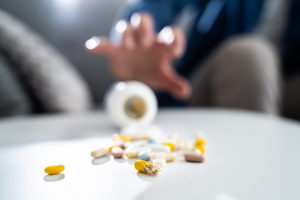Opioid Use, It’s Effects on Children, and How to Identify Misuse
Written by: Allison Bates, M.S.

On average, 130 Americans die from opioid overdose (including prescription- Oxycodone, Codeine, Morphine, and Fentanyl, and illicit opioids- heroine) EVERY DAY. This statistic affects the children in our community, as 2 million children annually have a parent who uses illicit drugs, including opioids. Many of those children end up entering the foster care system, due to parents needing treatment or arrests. Other ways children are impacted by the growing opioid epidemic are loss of loved ones, disorganized attachment (from parents not being physically or emotionally present), increased risk of abuse and neglect, and increased risk of emotional and behavioral issues.
With the ease to access opioids after injuries and medical treatments, 21-29% of patients for chronic pain end up misusing them. If you or a loved one are taking opioids, some signs to look out for to signal potential misuse are drowsiness, constipation, dizziness/vomiting, headaches, sweating, mood changes, loss of appetite, and weakness.
However, opioids are not necessarily all bad! After painful medical treatments or chronic pain, opioids can drastically improve a patient’s quality of life and assist in the healing process, due to the individual having more availability to make healthy choices to foster recovery. It is important to use the opioid safely by following doctors’ recommendations and monitoring the frequency of use. If you experience break through pain (pain before it is time to take the next dose), you can use other techniques (using a heating pad, ice, or distraction techniques). It is important to monitor symptoms, especially if taken longer than 2 weeks, to ensure you aren’t becoming dependent.
References:
https://americanspcc.org/the-opioid-crisis-and-the-effect-on-children/
https://youth.gov/youth-topics/substance-abuse/opioids
https://www.mayoclinic.org/diseases-conditions/prescription-drug-abuse/in-depth/tapering-off-opioids-when-and-how/art-20386036
